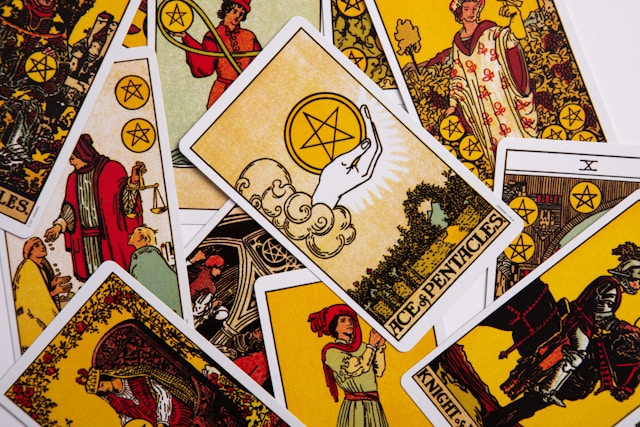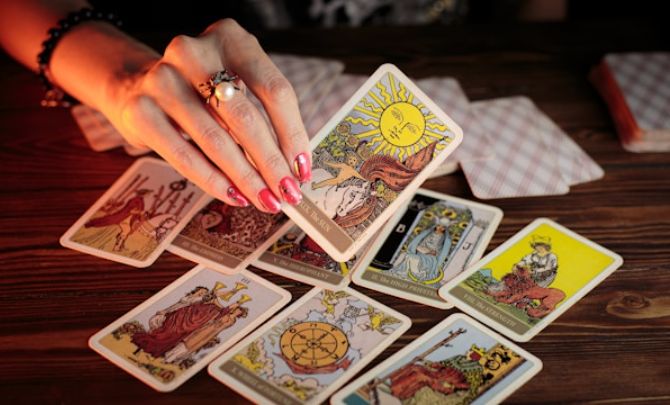Life rarely follows a predictable path. Unexpected events, emotional upheavals, and hard decisions can arise at any moment, leaving many searching for something that can bring direction or clarity. While some turn to practical strategies or personal reflection, others find insight in less conventional tools, one of which is tarot. Beyond the mystical imagery and ancient origins, tarot offers a reflective method for understanding personal experiences, revealing hidden patterns, and approaching challenges with a clearer state of mind. Whether used for daily reflection or deeper exploration, tarot has the potential to become a supportive companion when life feels uncertain.
Tarot as a Unique Form of Guidance
Tarot doesn’t hand out solutions or make decisions for anyone, but it can present ideas, possibilities, and outcomes that haven’t been fully considered. Each card carries symbolic meanings, layered with centuries of interpretation and cultural nuance. This opens a channel for self-examination that isn’t about predicting the future with absolute certainty; it’s about prompting the right questions. For those drawn to direct answers, the appeal of a yes-or-no reading can be especially strong. When people ask, is yes or no tarot accurate 100 percent, they’re often seeking more than just a quick fix; they’re hoping for validation, reassurance, or a different lens through which to view their situation. These types of readings don’t promise perfect precision, but they offer a simplified structure that can feel grounding in moments of stress. Whether consulting the cards during personal transitions or moments of doubt, tarot readings present possibilities that might otherwise remain overlooked.
Emotional Clarity Through Symbolism
When emotions are tangled or difficult to name, tarot cards act like a mirror, reflecting inner states through symbols and archetypes. Each card, whether it’s the Three of Swords showing heartache or the Star suggesting renewal, pulls feelings into the open. Sometimes, just seeing a representation of confusion or hope can make those emotions easier to process. This visual language gives form to what might be intangible or repressed. Instead of trying to label a feeling with words, a card’s imagery might resonate with the part of someone’s experience they couldn’t quite explain. In this way, tarot creates space to process without judgment or pressure.
A Pause for Reflection During Crisis
When life feels overwhelming, taking time to pause and reflect is often neglected. Tarot provides that opportunity. Drawing cards isn’t about fortune-telling so much as creating a moment to step back and ask, “What’s going on right now?” or “What do I need to see differently?” By framing questions and looking at possible meanings, a person can detach briefly from the pressure of having all the answers. In crisis, it’s easy to slip into reactive thinking. Tarot slows that process, helping bring awareness to what’s influencing decisions, be it fear, habit, hope, or old patterns. The cards don’t erase the problem, but they shift the mindset from panic to presence.
Building Confidence in Decision-Making
One of the most common uses of tarot is for decision-making. Whether the question is about relationships, career moves, or personal development, tarot can highlight aspects that aren’t being fully weighed. While the cards don’t make the choice, they offer a structure to explore consequences, motivations, and potential outcomes. This process can sharpen intuition and reinforce the idea that the answers are already within reach, waiting to be seen from a different angle. By asking, “What energy surrounds this decision?” or “What am I missing here?” a reader begins to trust their inner voice, even when uncertainty remains.
Tarot as a Journaling Companion

Many who work with tarot incorporate it into a daily journaling practice. Drawing a card and writing thoughts around it can deepen self-awareness, track emotional shifts, and uncover personal patterns over time. The consistency of returning to the cards invites a rhythm of check-ins, small moments of self-attention that, when repeated, create space for growth. This practice isn’t about memorizing meanings or predicting life events. It’s about showing up with curiosity and asking, “What’s unfolding in me today?” Whether the cards are familiar or feel entirely new, they often bring fresh language to the internal narrative.
Support During Transitional Phases
Times of change, whether welcome or unwanted, bring their kind of uncertainty. Tarot can offer reassurance and structure in these moments by laying out what feels unclear. Whether someone is moving, leaving a job, beginning a new relationship, or grieving an ending, tarot readings can anchor them to what matters. The cards don’t remove discomfort, but they can point to resources, strengths, and hidden supports. When identity feels shaken by transition, tarot can remind someone of who they are beyond their current roles or circumstances. These readings might highlight resilience, reveal blind spots, or simply suggest a fresh way of interpreting what’s happening.
